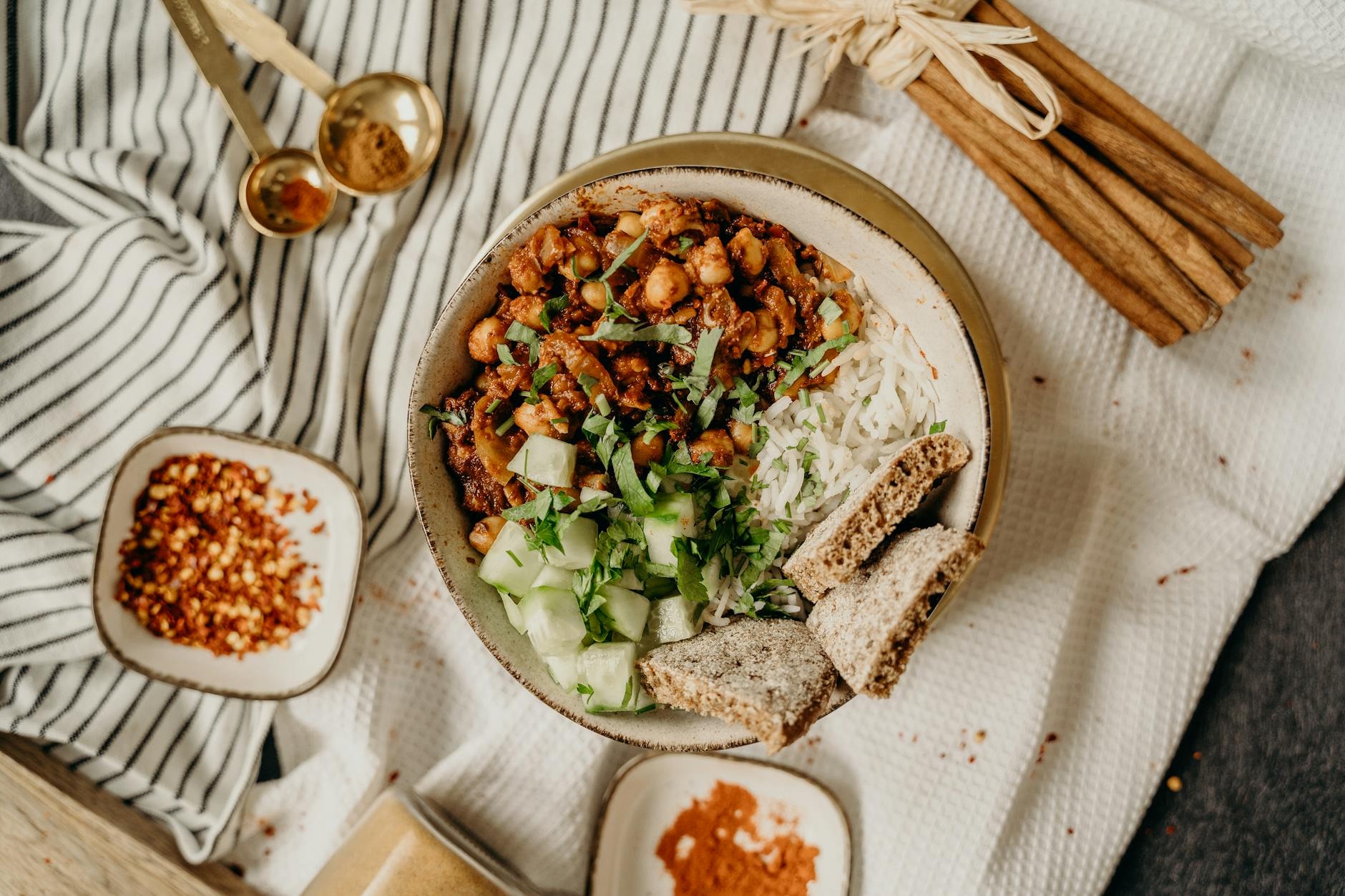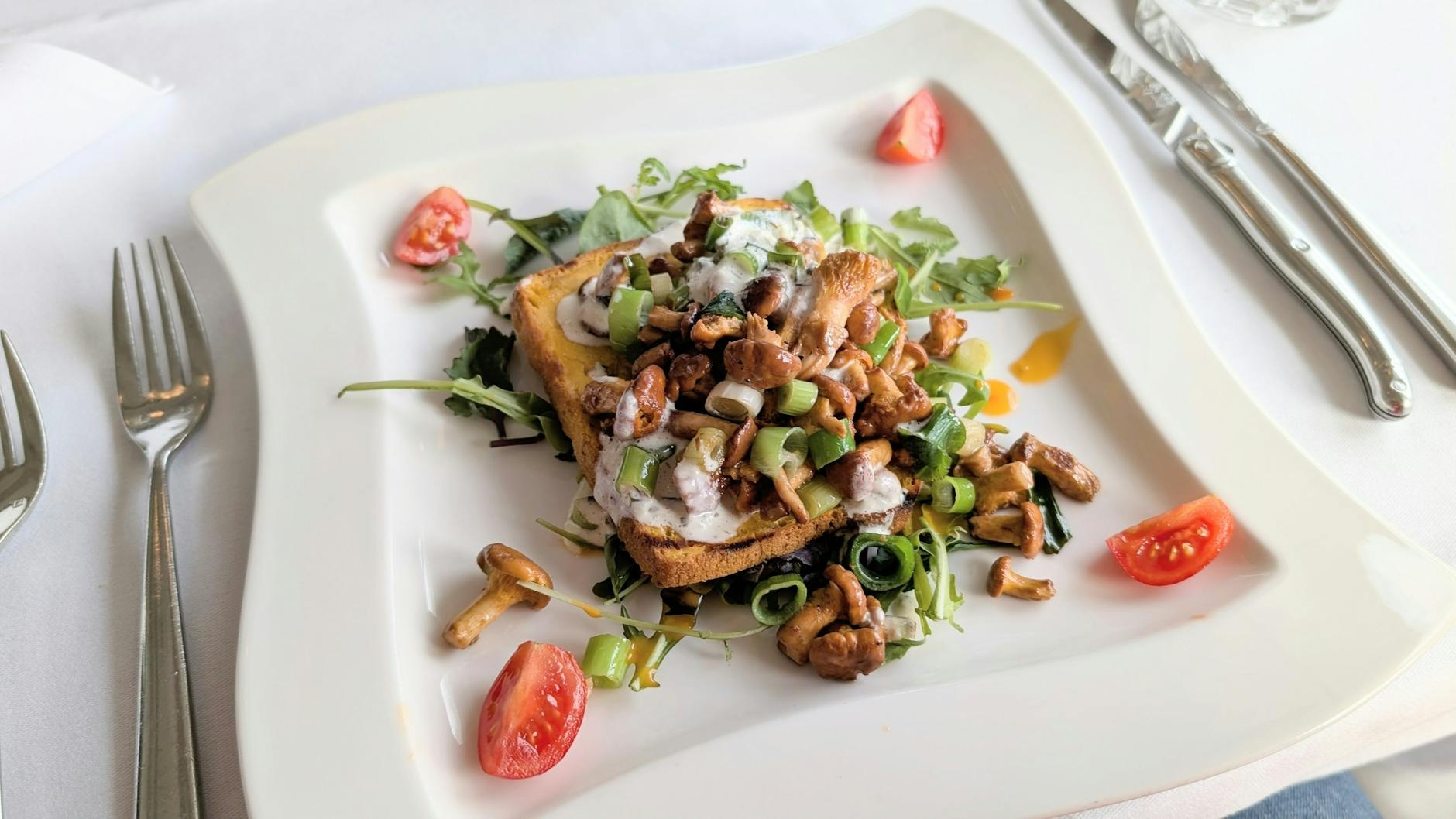Germany Food Guide
Content Information
Recently updated🔥Current Food Trends 2025
What's happening in Germany's culinary scene right now
Germany's culinary landscape in November 2025 celebrates its Michelin Guide Germany 2024 expansion with 338 starred restaurants including 10 three-star establishments (Vendôme in Bergisch Gladbach, Aqua in Wolfsburg, Victor's Fine Dining by Christian Bau in Perl-Nennig). The Reinheitsgebot (German Beer Purity Law) 509th anniversary in 2025 drives craft beer innovation while respecting traditional brewing methods, with over 1,500 breweries nationwide. Regional food movements champion 'nose-to-tail' cooking and ancient grain revival (emmer, einkorn, spelt) in artisan bakeries. Berlin's vegan capital status intensifies with over 100 fully plant-based restaurants, while Munich's Viktualienmarkt celebrates 215 years of fresh market traditions. Michelin Green Star restaurants promote sustainability - Restaurant Alois Dallmayr (Munich) leads zero-waste fine dining. German wine renaissance features climate-adapted varietals from 13 wine regions, particularly Mosel Riesling and Franconian Silvaner. Christmas market season (late November-December) showcases regional specialties: Nürnberger Lebkuchen (protected geographical indication), Dresdner Stollen (500+ year tradition), and Glühwein traditions. November 2025 sees Bundeskulinarisches Erbe (Federal Culinary Heritage) program protecting traditional recipes and artisan food crafts from each federal state. Tohru in Munich achieves 3-star status with Japanese-French fusion, while Rutz (Berlin, 3 stars) continues championing modern dining culture. Food scene explosion across Germany features lighter, brighter, more creative menus while traditional beer hall classics remain beloved. Sustainability focus: 80 Green Star restaurants (14 new additions) prioritize responsible, local sourcing.
Food Safety Tips
Essential food safety information to help you enjoy Germany's cuisine safely and confidently.
Be aware of raw pork consumption
Some traditional German dishes like "Mett" contain raw minced pork. While regulated, these carry higher risks than cooked meat.
Tap water is safe to drink
Germany has high-quality tap water that is safe to drink throughout the country.
Check for pasteurization of dairy products
Some traditional German cheeses are made with unpasteurized milk. Those at high risk should check before consuming.
Dietary Options
vegetarian
HIGH AVAILABILITYGermany has a growing vegetarian scene with dedicated options in most restaurants, particularly in larger cities.
vegan
MEDIUM AVAILABILITYVegan options are increasingly common, particularly in Berlin which has one of Europe's most vibrant vegan scenes.
gluten-free
MEDIUM AVAILABILITYAwareness of gluten intolerance is growing, and gluten-free options are available in many restaurants, though traditional German cuisine is heavy on wheat products.
halal
MEDIUM AVAILABILITYHalal food is widely available in Germany, particularly in major cities with significant Muslim populations (Berlin, Frankfurt, Cologne, Munich). Turkish and Middle Eastern restaurants are abundant and often halal-certified. Supermarkets carry halal meat sections, and apps like Zabihah help locate halal establishments. Main challenges: Pork is prevalent in German cuisine; alcohol is used in some traditional dishes (Schwarzwälder Kirschtorte with kirsch, beer-braised meats); gelatin from pork may be in desserts. Döner kebab (Germany's adopted Turkish street food), Turkish restaurants, and international chains offer reliable halal options. Many German restaurants now mark halal menu items. Look for 'halal' certification labels or ask staff.
kosher
LOW AVAILABILITYKosher food is available in Germany's major cities with Jewish communities. Berlin has the largest kosher infrastructure (Chabad, synagogues with kosher restaurants, Beth Café kosher restaurant). Munich, Frankfurt, Hamburg, and Cologne also have kosher options through Jewish community centers. Main challenges: Pork is ubiquitous in German cuisine; dairy and meat mixing is common (Käsespätzle, Schnitzel with cream sauce); shellfish in North German cuisine. Kosher supermarkets exist in Berlin (Eshkol Kosher Supermarket) and Frankfurt. Fish like herring and trout (common in German cuisine) are kosher if properly prepared. Vegetarian German dishes (pretzels, potato dishes, sauerkraut) offer safer alternatives. Use the Kosher GPS app for Germany locations. Contact local Jewish community centers before travel for updated kosher dining information.
Common Allergens
Wheat
HIGH PREVALENCEWheat is a staple in German cuisine, particularly in breads, pretzels, and baked goods.
COMMONLY FOUND IN:
Dairy
HIGH PREVALENCEDairy products are common in German cuisine, from milk and cream to various cheeses.
COMMONLY FOUND IN:
Eggs
MEDIUM PREVALENCEEggs are used in many German baked goods, noodles, and some traditional dishes.
COMMONLY FOUND IN:
Tree Nuts
MEDIUM PREVALENCENuts are common in German desserts and Christmas specialties.
COMMONLY FOUND IN:
Essential Food Experiences
These iconic dishes represent the must-have culinary experiences that define Germany's food culture for travelers.

Bratwurst
Grilled sausage made from pork, beef, or veal, served with mustard and often a bread roll. Regional varieties exist throughout Germany.

Sauerkraut
Finely shredded cabbage that has been fermented by lactic acid bacteria, typically served as a side dish with meats.

Schnitzel
Thin slice of meat (traditionally veal, often pork) breaded and fried. The Wiener Schnitzel (veal) is protected by law.

Schwarzwälder Kirschtorte
Black Forest cake with layers of chocolate cake, whipped cream, and cherries, flavored with kirsch (cherry brandy).

Käsespätzle
Soft egg noodles mixed with melted cheese and topped with fried onions, sometimes described as German mac and cheese.

Brezel (Pretzel)
Baked bread product made from dough twisted into a knot, with a distinctive glossy brown surface and sprinkled with salt.

Sauerbraten
Germany's national dish - pot roast (usually beef) marinated for days in wine, vinegar, and spices, then slow-braised until tender. Served with red cabbage and dumplings or potatoes.

Currywurst
Berlin's iconic street food - grilled pork sausage sliced and smothered in curry ketchup sauce, sprinkled with curry powder. Served with fries or bread roll.

Maultaschen
Swabian filled pasta pockets (German ravioli) stuffed with minced meat, spinach, breadcrumbs, and herbs. Served in broth, pan-fried with butter, or in potato salad.

Kartoffelpuffer
Crispy potato pancakes made from grated potatoes, onions, and eggs, pan-fried until golden. Served with applesauce (sweet) or sour cream (savory).
Regional Specialties & Local Favorites
Discover the authentic regional dishes and local favorites that showcase Germany's diverse culinary traditions.

Currywurst
A popular street food consisting of grilled and sliced pork sausage (Bratwurst) topped with a curry-ketchup sauce. It's often served with French fries (Pommes).

Döner Kebab
A Turkish-influenced dish that has become a staple in Germany. It consists of shaved meat (usually lamb, beef, or chicken) served in a pita bread or flatbread with various toppings like salad, vegetables, and sauces.
Allergens:

Schnitzel
A thin, breaded, and pan-fried cutlet of meat, typically veal or pork. It's often served with a side of potatoes or fries and a lemon wedge.
Allergens:

Rouladen
Thin beef slices rolled around bacon, onions, mustard, and pickles, then braised until tender. Classic German comfort food served with red cabbage and dumplings. Sunday dinner favorite in German households.

Weisswurst
Bavarian white sausage made from veal and pork back bacon, flavored with parsley, lemon, and cardamom. Traditionally eaten before noon with sweet mustard and pretzels. Munich beer garden staple.

Schweinshaxe
Roasted pork knuckle with crispy crackling skin and tender meat inside. Bavarian specialty typically served with sauerkraut and dumplings. Best enjoyed in Munich's traditional beer halls.

Kartoffelsalat
German potato salad with regional variations - southern style with vinegar and oil dressing, northern style with mayonnaise. Essential side dish for bratwurst and schnitzel. Every German family has their own recipe.
Allergens:

Flammkuchen
Alsatian-style thin-crust flatbread topped with crème fraîche, onions, and bacon. Similar to pizza but with distinctive German twist. Popular in southwestern Germany's wine regions.
Allergens:

Königsberger Klopse
Meatballs in creamy white caper sauce, a Berlin specialty named after the former East Prussian city of Königsberg. Served with boiled potatoes and beetroot. Comforting traditional German dish.
Allergens:

Eintopf
Hearty one-pot stew combining meat, vegetables, and potatoes or legumes. Varies by region and season. Traditional Thursday dish (Eintopftag) in German homes. Ultimate comfort food on cold days.
Regional Cuisine Highlights
Explore the diverse culinary landscapes across different regions of Germany.
Bavaria
Bavarian cuisine is hearty and features dishes like Schweinshaxe (roasted pork knuckle), Weißwurst (white sausage), and pretzels. Beer plays a significant role in the culinary culture.
Cultural Significance:
Bavarian cuisine reflects the region's agricultural traditions and its emphasis on communal dining and beer gardens.
Signature Dishes:
- Schweinshaxe
- Weißwurst
- Brezel
Key Ingredients:

Baden-Württemberg
Known for its rich and diverse cuisine, Baden-Württemberg features dishes like Maultaschen (Swabian ravioli), Spätzle (egg noodles), and Schwarzwälder Kirschtorte (Black Forest cake). Wine is an important part of the region's culinary heritage.
Cultural Significance:
The cuisine of Baden-Württemberg reflects the region's fertile land and its blend of Swabian and Baden culinary traditions.
Signature Dishes:
- Maultaschen
- Spätzle
- Schwarzwälder Kirschtorte
Key Ingredients:

Rhineland-Palatinate
This region is known for its wine production and its cuisine features dishes like Saumagen (stuffed pig's stomach), Handkäse mit Musik (hand cheese with onions and vinegar), and Zwiebelkuchen (onion cake).
Cultural Significance:
The cuisine of Rhineland-Palatinate is closely tied to its winemaking traditions and the abundance of local produce.
Signature Dishes:
- Saumagen
- Handkäse mit Musik
- Zwiebelkuchen
Key Ingredients:

Berlin
Berlin's cuisine reflects its multicultural identity with iconic street food (currywurst, döner kebab) alongside traditional dishes like Eisbein (boiled pork knuckle) and Berliner Weiße (sour wheat beer with syrup). The city's vibrant food scene includes over 100 vegan restaurants and diverse international cuisines.
Cultural Significance:
Berlin's culinary landscape embodies its role as Germany's cosmopolitan capital, blending working-class traditions with international influences and cutting-edge vegan innovation.
Signature Dishes:
- Currywurst
- Döner Kebab
- Eisbein (pork knuckle)
- Berliner (doughnuts)
- Buletten (meatballs)
Key Ingredients:

North Sea Coast / Hamburg
Northern German cuisine emphasizes seafood and maritime traditions. Hamburg's Fischmarkt supplies fresh fish for dishes like Finkenwerder Scholle (plaice with bacon), Labskaus (corned beef hash), and Matjes herring. Hearty, simple preparations reflect the region's fishing heritage.
Cultural Significance:
The cuisine reflects Hamburg's Hanseatic trading heritage and maritime culture, with fishing traditions dating back centuries.
Signature Dishes:
- Finkenwerder Scholle
- Labskaus
- Matjes herring
- Franzbrötchen (cinnamon pastry)
- Aalsuppe (eel soup)
Key Ingredients:

Saxony
Saxon cuisine blends German and Czech influences with comfort foods like Sauerbraten, Dresdner Stollen (Christmas bread), and Eierschecke (layered cheesecake). Coffee culture (Kaffee und Kuchen) is deeply rooted, and Leipzig's Auerbachs Keller (featured in Goethe's Faust) maintains centuries-old culinary traditions.
Cultural Significance:
Saxony's cuisine reflects its rich cultural history, royal court traditions, and centuries-old Christmas baking heritage, particularly Dresden's protected Stollen recipe.
Signature Dishes:
- Dresdner Stollen
- Eierschecke (cheesecake)
- Sauerbraten (Saxon style)
- Quarkkäulchen (quark pancakes)
- Leipziger Lerchen (almond pastry)
Key Ingredients:

Sweet Delights & Desserts
Indulge in Germany's traditional sweet treats and desserts.

Schwarzwälder Kirschtorte (Black Forest Cake)
A layered chocolate cake with cherries, whipped cream, and Kirschwasser (cherry brandy). It's a classic German dessert often enjoyed on special occasions.

Apfelstrudel (Apple Strudel)
A flaky pastry filled with apples, raisins, and cinnamon. It's often served warm with vanilla sauce or ice cream.

Bienenstich (Bee Sting Cake)
A yeast cake with a caramelized almond topping and a creamy custard filling. It's a popular dessert enjoyed throughout the year.

Stollen
Dresden's Christmas bread - a rich, dense fruitcake filled with candied fruits, nuts, spices, and marzipan, dusted with powdered sugar. Protected by geographical indication as 'Dresdner Stollen'.

Käsekuchen
German cheesecake made with quark (fresh cheese), creating a lighter, fluffier texture than American cheesecake. Often baked with a shortcrust base and topped with fruit.

Lebkuchen
Nuremberg's spiced gingerbread cookies with honey, nuts, and warming spices (cinnamon, cloves, nutmeg). Often glazed or chocolate-covered. Protected as 'Nürnberger Lebkuchen'.

Berliner (Pfannkuchen)
Fluffy jam-filled doughnuts dusted with powdered sugar or icing. Called Berliner in most of Germany, Pfannkuchen in Berlin. Traditionally eaten on New Year's Eve and Carnival.

Baumkuchen
Layered cake baked on a rotating spit, creating tree ring patterns. Each thin layer is brushed with batter and grilled. Often glazed with chocolate or sugar. Called 'King of Cakes'.
Traditional Beverages
Discover Germany's traditional drinks, from locally produced spirits to regional wines.

Bier (Beer)
Germany is renowned for its beer, with a wide variety of styles brewed across the country. Pilsner, Hefeweizen, and Dunkel are some of the most popular types.

Riesling
A crisp, aromatic white wine primarily produced in the Rhine region. It's known for its fruity and floral notes, often with a hint of minerality.

Kirschwasser
A clear, colorless brandy made from double distillation of morello cherries. It's often used in desserts and cocktails.
Soft Beverages
Discover Germany's traditional non-alcoholic drinks, from local teas to refreshing juices.

Apfelschorle
A refreshing mix of apple juice and sparkling water. It's a popular non-alcoholic beverage enjoyed throughout the day.

Kaffee (Coffee)
Coffee is a staple beverage in Germany, typically consumed throughout the day. Filter coffee is the most common preparation method.

Tee (Tea)
Tea, particularly herbal and fruit infusions, is also popular. Black tea is commonly consumed with milk and sugar.